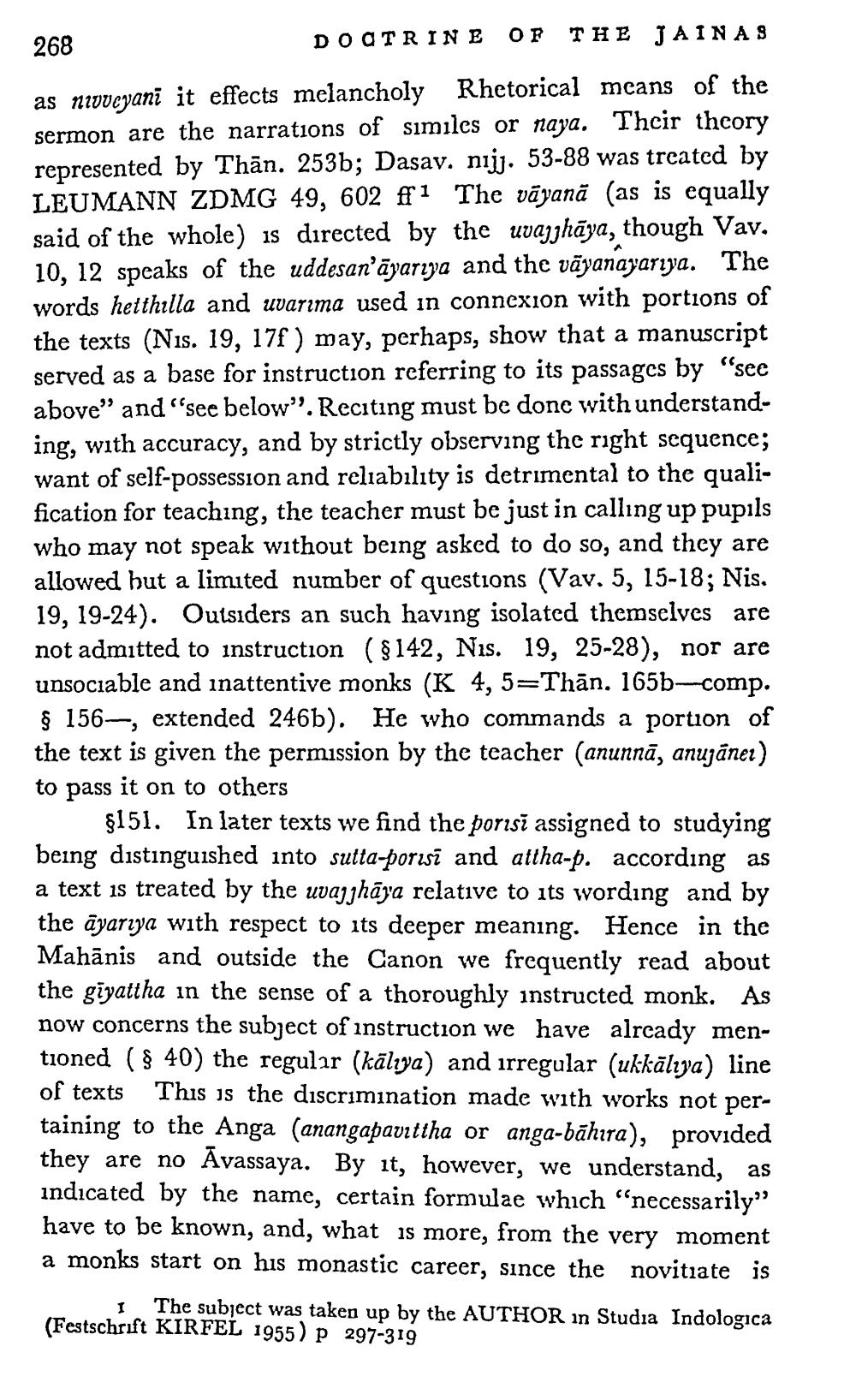________________
268
DOCTRINE OF THE JAINAS as nidveyani it effects melancholy Rhetorical means of the sermon are the narrations of similes or naya. Their theory represented by Thān. 253b; Dasav. nijj. 53-88 was treated by LEUMANN ZDMG 49, 602 ffi The vāyanā (as is equally said of the whole) is directed by the uvajjhāya, though Vav. 10, 12 speaks of the uddesar'āyarıya and the vāyanayarıya. The words hetthilla and uvarima used in connexion with portions of the texts (Nis. 19, 17 ) may, perhaps, show that a manuscript served as a base for instruction referring to its passages by "see above" and "see below". Reciting must be donc with understanding, with accuracy, and by strictly observing the right scquence; want of self-possession and reliability is detrimental to the qualification for teaching, the teacher must be just in calling up pupils who may not speak without being asked to do so, and they are allowed hut a limited number of questions (Vav. 5, 15-18; Nis. 19, 19-24). Outsiders an such having isolated themselves are not admitted to instruction ($ 142, Nis. 19, 25-28), nor are unsociable and inattentive monks (K 4, 5=Thān. 165b-comp. § 156—, extended 246b). He who commands a portion of the text is given the permission by the teacher (anunnā, anujāner) to pass it on to others
$151. In later texts we find the porisi assigned to studying being distinguished into sutta-porisi and attha-p. according as a text is treated by the uvajjhāya relative to its wording and by the āyarıya with respect to its deeper meaning. Hence in the Mahānis and outside the Canon we frequently read about the giyattha in the sense of a thoroughly instructed monk. As now concerns the subject of instruction we have already mentioned ( § 40) the regular (kāliya) and irregular (ukkālıya) line of texts This is the discrimination made with works not pertaining to the Anga (anangapavittha or anga-bāhira), provided they are no Āvassaya. By it, however, we understand, as indicated by the name, certain formulae which “necessarily" have to be known, and, what is more, from the very moment a monks start on his monastic career, since the novitiate is
1 The subject was taken up by the AUTHOR in Studia Indologica (Festschrift KIRFEL 1955) p 297-319




